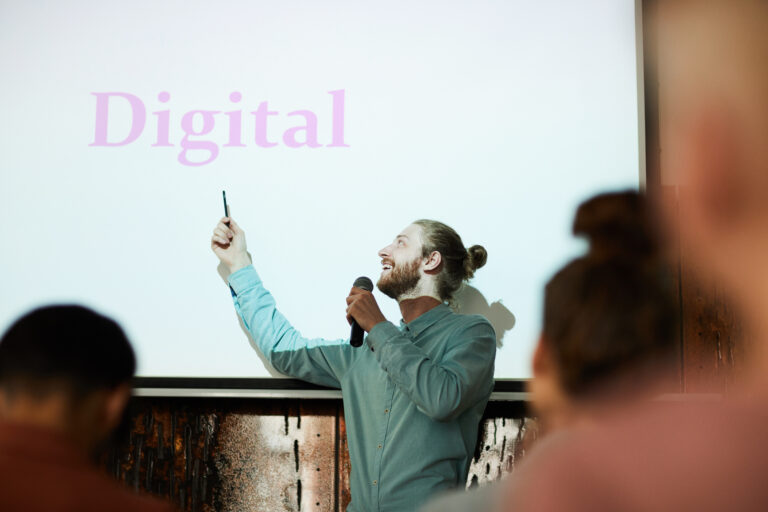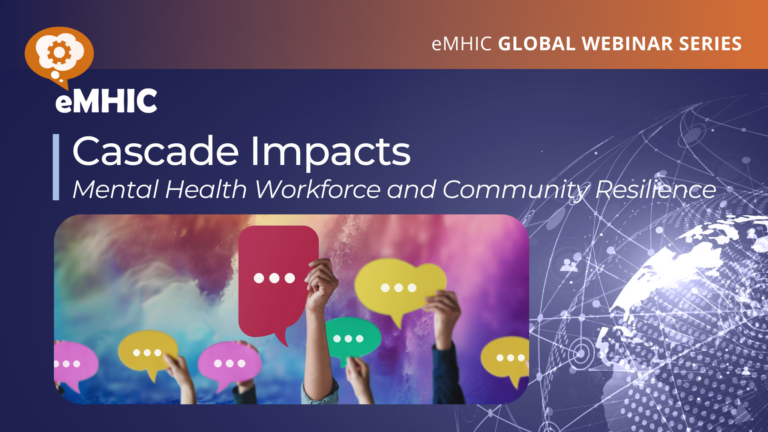Embedding lived experience into digital mental health involves integrating the real-life experiences of individuals who have personally navigated mental health challenges into the design, development, and delivery of digital mental health solutions.
It goes beyond just acknowledging these experiences to actively involving individuals in decision-making processes, co-designing interventions, and capturing consumer feedback at all stages of program development and delivery.
By incorporating lived experience, digital mental health initiatives become more authentic, empathetic, and responsive to the diverse needs of users, ultimately enhancing their effectiveness and relevance in supporting mental well-being.
Getting started
For most organisations, partnering effectively with consumers requires a journey of change.
Like any form of business transformation, it’s important to approach it with enough time to ensure all the foundational pieces are in place and enough internal preparation to bring everyone on that journey from the very beginning.
Ensure a healthy level of understanding and respect for the expertise your lived experience contributors will bring. It’s critical this extends across all aspects of your business from Board level down, including areas that might not seem immediately relevant such as finance and administration.
Be curious and embark on the journey with the right mindset as it’s not possible to achieve a good outcome if you’ve turned the process into a tick box exercise. You might need to be prepared for uncomfortable conversations about power sharing arrangements and relinquishing control over certain processes or decisions.
You also may need to be more flexible than you normally would be when developing or evaluating programs. From board level down, there must be a commitment to learning and continuous improvement – for internal processes as well as program specifics.
Always remember that the end point is a product that’s going to be better suited to the community you’re creating it for and this benefits everyone.
Creating a lived experience framework
Establishing a Lived Experience Framework can help to set the scene for future work.
SANE Australia was founded in 1986 by families impacted by schizophrenia and other complex mental health conditions, so lived experience has been part of our DNA from the very beginning.
Our Lived Experience Framework formally embeds lived experience into our constitution and cascades it down into every part of our organisation, from Board to service design and delivery.
It establishes the foundations and guiding principles of Lived Experience at SANE and creates a shared vision, goals and strategic direction to champion lived experience. It provides a consistency of practice, outlining how SANE partners, engages, empowers, and employs people with lived experience.
Importantly, it also identifies strategic priorities that strengthen, grow and develop lived experience initiatives both within SANE and more broadly.
SANE currently have designated lived experience roles both on the Board and amongst staff, including the CEO role. Guiding all our activities is a Lived Experience Advisory Committee, comprising lived experience representatives of different backgrounds.
Of course, SANE is a mental health advocate and provider. Not everyone is in a position to hire a large number of lived experience staff, nor do they need to. But having a diverse group of people within your organisation that can champion and support consumer advisors as well as guiding internal processes will help you achieve the best outcomes.
Case study – The SANE Guided Service
The SANE guided service is Australia’s first digital psychosocial support service. Built on a customised Salesforce Health Cloud platform and funded by the Australian Government, the service was first trialled in late 2021 and is now being delivered across 13 Australian health regions.
The program involves digital access to qualified counsellors or peer support workers, connections to moderated online discussion forums and access to a range of therapeutic activities through a personalised portal that empowers service users to better manage their mental health.
The original concept for this service grew from a series of small trials delivered by SANE in response to consumer need. These elements were explored and expanded in a comprehensive co-design process supported by the ALIVE Centre for Lived Experience Research at the University of Melbourne.
Over 60 diverse co-designers, including Aboriginal and Torres Strait Islander peoples, culturally and linguistically diverse communities, and LGBTIQ individuals, collaborated with us to identify gaps in accessible health services and community support. Together, we co-designed and co-produced our service model and digital platform, integrating standard digital design principles with user experience and lived experience feedback.
Critically, the service was designed from the very beginning to capture measurable outcomes at both the individual and service level. This approach enabled us to not only deliver intended outcomes but also gauge user-rated success.
During implementation, we prioritised understanding user experiences through active and passive feedback mechanisms. This included standard surveys, staff insights, and real-time feedback channels for service users to voice their opinions, enabling continuous improvement.
All service users and referrers are invited to complete user surveys and contribute comments about their experience at different stages of the service journey. These results are reported to our funders, with feedback embedded into the evolving system as required.
Regular participant feedback is sought after each call, allowing participants to provide a ‘thumbs up, thumbs down’ rating as well as optional comments. Currently, the guided service has a 97 per cent thumbs up rating from service users.
Some final tips for success
Partnering with consumers and service users has so many benefits not just for delivering better quality services but also for business improvement and efficiency. There are business outcomes as well as quality outcomes to be gained by going through this process, and going into it with that mindset will see it pay dividends for the future.
Some final tips for partnering with consumers and embedding lived experience into digital mental health programs –
Embrace feedback – Embrace service user feedback with an open mind and a learning mindset. Don’t avoid critical feedback as sometimes it can be the thing that drives significant improvements.
Prioritise accessibility – Ensure that all processes are accessible to all service users. Consider different formats and mechanisms for participation, accommodating diverse needs and preferences.
Encourage various participation formats – Recognise that not everyone feels comfortable in traditional settings like focus groups. Offer alternative formats such as virtual sessions or written feedback options to cater to diverse preferences.
Facilitate easy feedback sharing – Make it simple for service users to provide feedback, including complaints and suggestions. Streamline the input process to encourage open communication and engagement.
Don’t reinvent the wheel – There are many resources out there that can help if you’re starting from scratch. In Australia, the National Mental Health Commission and consumer and carer peak bodies in each state and territory are great source of advice.





